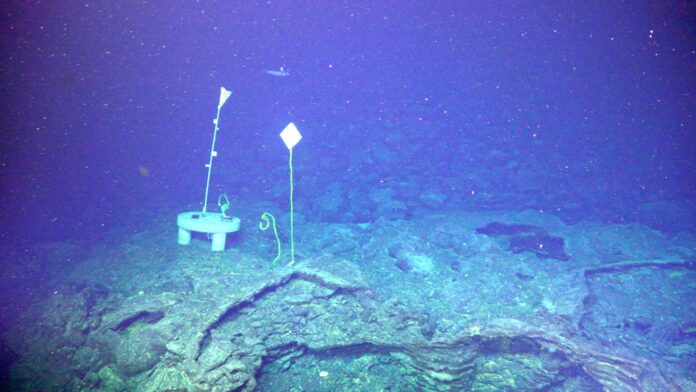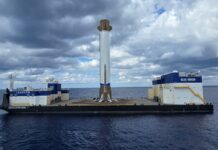An underwater volcano off the coast of Oregon is expected to erupt again, but not for another couple of years. Axial Seamount, a restless giant on the Juan de Fuca Ridge, is predicted to blow its top between mid-2026 and late 2026. This timeline pushes back earlier projections that placed the eruption as early as late 2025.
Axial Seamount holds the title of most active submarine volcano in the Northeast Pacific Ocean, boasting eruptions in 1998, 2011, and 2015. Its past behavior helps scientists understand its future. Scientists closely monitor Axial Seamount for signs of an impending eruption—specifically a buildup of magma beneath the seafloor (ground inflation) and increased earthquake activity (seismicity). These factors tend to ramp up before an eruption occurs.
“After successfully forecasting the 2015 eruption, we’ve been trying to predict the next one ever since,” explains Bill Chadwick, research associate at Oregon State University and co-author of the Axial Seamount Blog. In a recent presentation to the American Geophysical Union, Chadwick and his team highlighted that eruptions at Axial follow this pattern: periods of heightened seismicity and steady ground inflation fueled by rising magma lead to an eruption.
Following the 2015 eruption, ground inflation gradually declined throughout 2023 until reaching almost zero in the summer. However, a significant shift occurred in the fall of 2023 with renewed inflation and earthquake activity, signaling a change in the magma supply to the volcano. Initially, this resurgence led scientists to believe an eruption was imminent, possibly within the following year.
By late 2024, Axial Seamount had reached 95% of the ground uplift level observed before the 2015 eruption. However, by April 2025, inflation rates slowed again. By October 27, 2025, Chadwick adjusted his prediction on the Axial Blog: “It will take a bit longer than we initially thought to reach that same inflation threshold that the volcano reached before its last eruption,” he wrote, placing the new target window between mid-2026 and late 2026.
This shift in timeline is partly due to the apparent pattern of increasing inflation thresholds with each eruption at Axial Seamount. Scientists believe this is because magma rising to the surface compresses surrounding rock layers, making it harder for future eruptions to occur in exactly the same spot. This phenomenon suggests that even though pressure continues to build, reaching critical levels takes longer than before.
Despite the progress made in understanding Axial’s behavior, predicting eruptions remains a complex task due to the unpredictable nature of magma movements and inflation rates. However, there are promising developments on the horizon. Chadwick and his team are utilizing a new physics-based model that has accurately predicted past eruptions using historical data. Starting November 10, 2024, they will apply this model in real time to Axial Seamount’s current monitoring data, aiming for a more precise eruption prediction. The results, however, won’t be revealed until after the next eruption, allowing for a rigorous test of the model’s accuracy.







































































